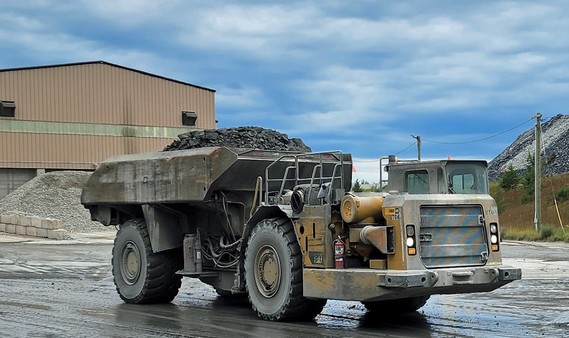
Dear Neighbor,
I recently visited the Eagle Underground Copper-Nickel Mine and the Humboldt Processing Mill. Both are located near Marquette, in Michigan’s Upper Peninsula. Talon Metals coordinated the visit with the Lundin Mining Company which operates the Eagle Mine and Humboldt Mill Facility.
As part of my job as a legislator I serve as a member of the House Environmental and Natural Resources Committee, the Legislative Permanent School Fund Commission, and on the Iron Range Rehabilitation & Resources Board. Over the past eight years, I have visited just about every operating iron mine and taconite plant in Minnesota.
Visiting the Eagle Mine and Humboldt Plant was a real eye opener which allowed firsthand observation of the extensive environmental procedures that apply to handling the ore produced by this modern non-ferrous mine. I was struck by the very small the surface footprint of the Eagle Mine and the relative quietness at both the Eagle Mine and the Humboldt Mill.
The Eagle Mine initially recovered copper-nickel ore found at about 1,000 feet. With the discovery of the Eagle East deposit at about 3,000 feet the life of the mine was recently extended. The copper-nickel ore is initially broken up underground and then brought to the surface in specially designed haul trucks.
It takes about two hours for a truck to make the several mile round trip from the surface down to the 3,000-foot level and back up with a load ore. The trucks are only seen briefly on the surface for a couple of minutes when they emerge from the tunnel portal and travel a few hundred yards to deposit their ore into a completely enclosed loading facility. Those few minutes are the only time you will actually see the copper-nickel ore or concentrate out in the open. The rest of the time the ore is either a building, a covered semi-truck or in the case of the concentrate in a covered rail car.
After the ore is deposited into the enclosed loading facility, it’s transferred to semi-truck trucks for the 66-mile trip to the Humboldt Mill for processing. Before leaving the mine, the covered semi-trucks must pass through a wash station to ensure that no ore residue is inadvertently tracked off the facility by the trucks.
At the mill, the ore is reduced to a fine powder. Water is added to create a slurry which allows the nickel and copper to be separated through a floatation process. The copper-nickel is skimmed off the top and further separated into nickel and copper concentrates.
That concentrates are dried and leave the mill in covered rail cars bound for Canada for further processing. The US currently does not have the ability to domestically refine high grade nickel. Today we must import finished high-grade nickel from other countries located offshore.
All water is carefully managed at the mine and mill site. Both facilities have state of the art water treatment systems. Water is not allowed to leave either site unless it meets all current environmental standards.
It’s about a six-hour trip over to the mine site, but the tour put to rest a lot of wildly inaccurate speculation of what a modern high-grade underground copper-nickel mine and processing site looks like.
Sincerely,
Dale